
Guide to Gyeongju (UNESCO World Heritage) & its Famous Attractions from Seoul/Busan
▶How to get from Seoul/Busan to Gyeongju Station (formerly Singyeongju Station), Gyeongju
▶Travel Itinerary to Most Popular Attractions in Gyeongju
Guides & How to get to:
▶Hwangnidan-gil Cafe & Shopping Street
▶Gyochon Hanok Village & Woljeonggyo Bridge
▶Cherry Blossom Festival & Hot Spots
▶Recommended Cafes & Restaurants
-
From Gyeongju Station 경주역 (KTX/SRT, formerly Singyeongju Station), take bus to Gyeongju city center and attractions. more details
Gyeongju was the ancient capital city of the Silla Dynasty that ruled the Korean Peninsula for 992 years (57 BCE – 935 CE). It is home to many historical heritage sites, Buddhist art masterpieces, relics, palaces, royal tombs, temples and fortress from the culture of Silla Kingdom.


Bulguksa Temple, Seokguram Grotto and Gyeongju Historic Areas (UNESCO World Heritage)
Both Bulguksa Temple and Seokguram Grotto were registered as UNESCO World Heritage Site on December 1995.
Separately, 5 distinct areas in the centre of Gyeongju and its suburbs, collectively named as 'Gyeongju Historic Areas' were designated as UNESCO World Heritage Site on November 2000. Gyeongju Historic Areas have a total of 52 designated cultural assets registered as World Cultural Heritages.



How to Get to Gyeongju from Seoul/Busan:
Gyeongju Station 경주역 (formerly Singyeongju Station 신경주역, KTX/SRT)
Gyeongju Station (KTX / SRT), Gyeongju
Gyeongju Station 경주역 (formerly Singyeongju Station 신경주역) is the nearest train station on Gyeongbu Line (KTX / SRT) to Gyeongju. Travelling by KTX or SRT train is the easiest and fastest way to Gyeongju.
💡Gyeongju is nearer to Busan than Seoul. Gyeongju Station (formerly Singyeongju Station) is only 2 stops away to Busan Station.
💡If you have visited Gyeongju in the past via KTX connection to Gyeongju Station 경주역 located in Gyeongju city center, the station has closed on 28 December 2021, after 103 years of operation. It was reborn as 'Gyeongju Cultural Center 1918' on 2 December 2022.
💡On 28 Dec 2023, Singyeongju Station was renamed to Gyeongju Station, 13 years after opening. Visitors visiting Gyeongju using high-speed trains (KTX and SRT) must reserve tickets for Gyeongju Station instead of Singyeongju Station.
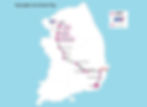
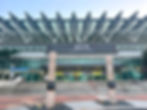
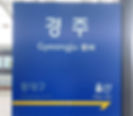

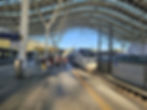

a) Tourist Information Center & Lockers @Gyeongju Station (formerly Singyeongju Station)
Gyeongju Station (formerly Singyeongju Station) is a fairly large but easy to get around station, it has all the facilities that travellers may need. e.g. luggage delivery/storage, Tourist Information Center, cafes and restaurants.
If you are stopping over Gyeongju on a day trip between 2 cities (e.g. Seoul & Busan), lockers for your luggage are conveniently located near the station's entrance. Touchscreen instructions are available in English.

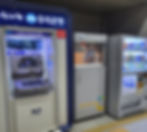


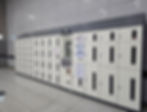

b) Gyeongju Cultural Heritage Exhibition Hall @Gyeongju Station
Interestingly, there is a Gyeongju Cultural Heritage Exhibition Hall inside Gyeongju Station where historical artifacts excavated during the construction of the Gyeongbu High-Speed Railway are displayed. Free admission for visitors.
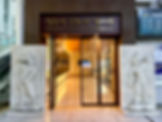

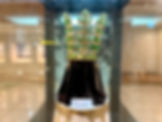

c) Souvenir Shops, Convenience Store, Cafes & Restaurants @Gyeongju Station
There are also convenience store, cafes, restaurants, souvenir shops, local speciality products and snacks at Gyeongju Station.

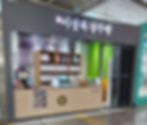




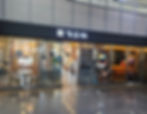
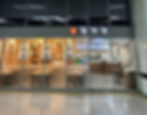
d) Exit 1 to Bus Stop & Taxi Stand @Gyeongju Station
To get to the bus stop (/taxi stand), take Exit 1 and the bus stop is towards the right.
💡From Gyeongju Station (formerly Singyeongju Station), you can take Bus# 50, 60, 61, 70, 302, 332, 700, 710 & 711 to Gyeongju Express Bus Terminal. 20 mins ride and about 10 mins walk to the nearest attraction, i.e. Hwangnidan-gil Street.
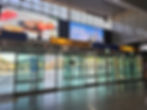

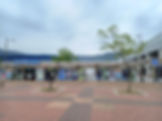
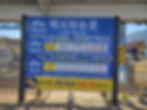
From Seoul to Gyeongju
KTX Train from Seoul Station to Gyeongju Station (formerly Singyeongju Station, Gyeongju): 2hrs 13mins (₩49,300)
SRT Train from Suseo Station (Seoul) to Gyeongju Station (formerly Singyeongju Station, Gyeongju): 2hrs 5mins (₩42,600)
Intercity bus from Seoul to Gyeongju: 4hrs (₩49,300)
💡KTX train is covered under KORAIL Pass (rail travel pass exclusive for foreign visitors).
💡You can transfer from Suseo Station (Seoul Subway Line 3 / Bungdang Line) to Suseo Station (SRT) via the underground transfer passageway. 7-10 mins walk.
💡Seoul Subway to Suseo Station from Myeongdong Station (45mins, 1-2 lines transfer) / from Seoul Station (50mins, 1-2 lines transfer) / Gangnam Station (26 mins, 1 line transfer).
From Busan to Gyeongju
KTX Train from Busan to Gyeongju Station (formerly Singyeongju Station, Gyeongju): 35 mins (₩11,000)
SRT Train from Busan to Gyeongju Station (formerly Singyeongju Station, Gyeongju): 35 mins (₩10,000)
Intercity Bus from Busan to Gyeongju Intercity/Express Bus Terminal: 50 mins (₩7,700)
💡The intercity bus departs every every 20-30 mins and express bus departs every 1.5hrs. Both with the same travel time and bus fare.
💡To get to the bus terminal, take the Busan Subway to Nopo Station (line 1). Follow the sign, 'Busan Central Bus Terminal (Express•Intercity)'. 3 mins walk. The bus for Gyeongju departs from platform 27. From Gyeongju Intercity/Express Bus Terminal, it is about 10 mins walk to the nearest attraction, Hwangnidan-gil Street.
💡Busan Subway to Nopo Station from Busan Station (39mins, same line) / Seomyeon Station (29 mins, same line) / Haeundae Station (52 mins, 2 lines transfer).
Train & bus fares subject to change. Train travel time & fares vary according to departure time.
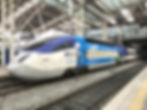
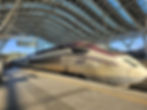

Gyeongju Day Trip Travel Course/Itinerary
Gyeongju ancient city is best visited on a 2-day relax trip with overnight stay in Gyeongju. However, with proper planning (& comfortable walking shoes), you can also visit most popular and famous attractions in Gyeongju on a worthy 1-day trip from Seoul or on your way to Busan.
These recommended Gyeongju attractions, often included on day tours are divided into 2 main regions:
a) Bulguksa Temple Region: Bulguksa Temple, Seokguram Grotto
b) Gyeongju Downtown Area (also known as Gyeongju Dareungwon Ancient Tomb Complex): Cheomseongdae Observatory, Daereungwon Royal Tomb, Hwangnidan-gil Cafe & Shopping Street, Gyochon Hanok Village & Woljeonggyo Bridge, Donggung Palace & Wolji Pond, Gyeongju National Museum (optional)
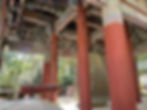

a) Bulguksa Temple Region
This region comprises of the well-known UNESCO World Cultural Heritages of:
-
Bulguksa Temple
-
Seokguram Grotto
Notes on Travelling in Bulguksa Temple region:
-
Transport is limited and infrequent. It takes about 1 hr from Gyeongju Station (formerly Singyeongju Station, KTX/SRT) or 45 mins from Gyeongju Express Bus Terminal in Gyeongju city center. So, planning around the bus schedule is recommended.
-
There is only 1 bus service that operates hourly between Bulguksa Temple and Seokguram Grotto. If you miss the bus, you may consider taking a taxi (20mins, ₩12,000) up the winding road to Seokguram Grotto instead.
-
Plan to arrive Gyeongju very early so that you can complete this region by lunch time on your day trip to Gyeongju. Alternatively, if you wish for a more relax trip, skip this region or visit over a 2-day trip.
(image source: Cultural Heritage Administration)
b) Gyeongju Downtown Area (also known as Gyeongju Dareungwon Ancient Tomb Complex)
The most popular and well-visited attractions in Gyeongju are concentrated around Gyeongju Downtown Area, namely:
-
Cheomseongdae Observatory (night viewing available)
-
Daereungwon Royal Tomb (night viewing available)
-
Hwangnidan-gil Cafe & Shopping Street
-
Gyochon Hanok Village & Woljeonggyo Bridge (night viewing recommended)
-
Donggung Palace & Wolji Pond (night viewing recommended)
-
Gyeongju National Museum (recommended on 1-day course on downtown area only or 2-day course)
Notes on Travelling at Gyeongju Downtown Area:
-
All attractions are located within 30 mins walk from one end to the other end. Even so, it is still a fair amount of walking from one attraction to another. Comfortable walking shoes recommended.
-
There is no 'perfect loop' walking course to cover all the attractions as Hwangnidan-gil Street and Daereungwon Royal Tomb run parallel to each other and cover a big area. Woljeonggyo Bridge and Wolji Pond are on different ends too. You can basically pick and choose your preferred attractions to visit in the downtown area.
c) Recommended 1-Day Trip Itinerary to Gyeongju
Morning:
🚅Arrived at Gyeongju Station (formerly Singyeongju Station, KTX/SRT)
🚌Take bus to Bulguksa Temple
📸Bulguksa Temple
🚌Take bus to Seokguram Grotto
📸Seokguram Grotto
🚌Take bus to Gyeongju Downtown Area
💡If you are hungry, you can have lunch at the restaurants near Bulguksa Temple Bus Stop.
Afternoon:
🚶♀️Alight at Wolseong-dong Community Center bus stop (as most buses stop here), by-passing Cheomseongdae on the way to lunch.
📸Cheomseongdae Observatory
🥢Lunch near Starbucks Gyeongju Daereungwon
📸Daereungwon Royal Tombs
🍪Hwangnidan-gil Cafe & Shopping Street
📸Gyochon Hanok Village
Nightfall:
📸Woljeonggyo Bridge
📸Donggung Palace & Wolji Pond
🚌Take bus back to Gyeongju Station (formerly Singyeongju Station)
🥢Dinner at Gyeongju Station (formerly Singyeongju Station)
d) Recommended App - KakaoMap
You are recommended to use KakaoMap to find the bus numbers available from your current location to your next destination and your whereabout on the bus journey. Also, KakaoMap app is useful on your walking direction around Gyeongju Downtown Area, particularly to Woljeonggyo Bridge and onwards to Donggung Palace & Wolji Pond.
1
Bulguksa Temple 불국사
9:00 - 18:30 (last admission 17:30)
Free (effective from 4 May 2023, in accordance with the revised Cultural Heritage Protection Act)
From Gyeongju Station (formerly Singyeongju Station, KTX/SRT) exit 1, walk to the bus stop on your right.
-
Take Bus# 711 (47 mins) / 700 (55mins) OR
-
Take Bus# 50 / 51 / 70 / 710 (18 mins), get off at Gyeongju Express•Intercity Bus Terminal 고속버스•시외버스터미널 stop. From the same bus stop, transfer to Bus# 11 (34 min) / 10 (42 mins) / 711 (29 mins).
Get off at Bulguksa Temple 불국사 stop. Cross the pedestrian crossing on the left of the road. On reaching the other side of the road, the Tourist Information Center is on your left. Walk towards the right side of the big public carpark (public toilets available) for the temple's main entrance. 12 mins walk.
💡Bus# 711 runs 10x a day from Gyeongju Station (formerly Singyeongju Station). 7:07, 8:08, 10:21, 11:17, 13:17, 14:27, 16:16, 17:04, 19:20, 20:23. Latest timetable. This is the new bus route effective 27 February 2023.
💡Bus# 700 runs 4x a day from Gyeongju Station (formerly Singyeongju Station). 7:50, 8:50, 13:50, 14:50. Latest timetable.
💡The above bus schedules are also displayed at the bus stop outside Gyeongju Station (formerly Singyeongju Station).
💡If you miss Bus# 711 / 700 at Gyeongju Station (formerly Singyeongju Station), you may take the more frequent buses and transfer at the bus terminal.
🎀When you arrived at Bulguksa Temple, it might be worthwhile to check if Bus# 12 to Seokguram Grotto is arriving. If so, you may like to visit Seokguram Grotto first as Bus#12 is pretty infrequent.
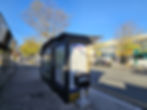
Transfer at Gyeongju Express•Intercity Bus Terminal Bus Stop (where necessary)

Tourist Information Center @Bulguksa Temple

Walk on the right of public carpark to Bulguksa Temple's main entrance
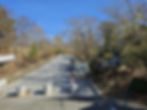
Follow the signs to Bulguksa Temple's main entrance
Bulguksa Temple and the nearby Seokguram Grotto (both UNESCO World Cultural Heritage) reside on Tohamsan Mountain which is regarded as the holy mountain of Silla. Surrounded by natural beauty, Bulguksa Temple is an architecture masterpiece of the Unified Silla era.
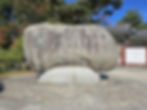

Famous Cultural Assets of Bulguksa Temple
Often seen on photographs taken of Bulguksa Temple are the 2 sets of stairways referred as:

(Yeonhwagyo and Chilbogyo Bridges)

(Cheongungyo and Baegungyo Bridges)
-
Cheongungyo and Baegungyo Bridges (National Treasure No. 23) leading up to main Jahamun Gate and Daeungjeon Hall and
-
Yeonhwagyo and Chilbogyo Bridges (National Treasure No. 22) leading up to Anyangmun Gate and Amitabha Buddha (National Treasure No. 27).
However, all these bridges (/stairways) are closed to the public and you can get inside the temple via the side path. From there, you can see the famous pagodas and enjoy views from both Jahamun and Anyangmun Gates.

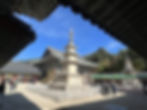
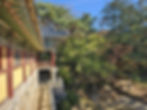

Besides the well-known gates and bridges, other famous cultural assets of Bulguksa Temple include:
-
Dabotap Pagoda (Pagoda of Abundant Treasures, National Treasure No. 20)
-
Seokgatap Pagoda (Three-story Stone Pagoda/Pagoda of Sakyamuri Buddha, National Treasure No. 21)
-
Daeungjeon Hall (Great Enlightenment Hall, Treasure No.1744) and Sakyamuni Buddha.
💡Dabotap Pagoda is the image that appears on the Korean ₩10 brass coin.
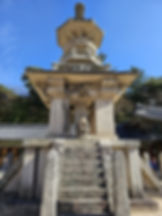

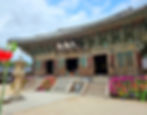
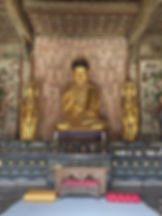
Other Highlights & Sights of Bulguksa Temple
From the main entrance and before reaching Banya Pond, keep a look out for a pine tree, Guanyin Song that is over 194 years old.

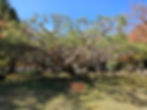




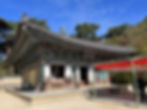
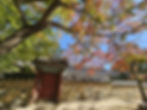
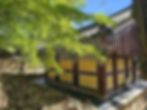
Other interesting sights at Bulguksa Temple include temple halls (e.g. Geungnakjeon, Gwaneumjeon), lanterns display, large bell (@Bumjonggak Pavilion), art works (e.g. Sarira Pagoda, Golden Pig), prayer stone stacks, tall trees and persimmon fruit trees (autumn).
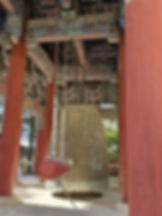
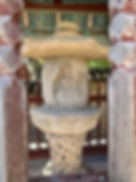
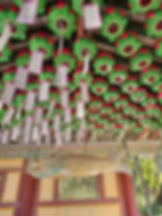
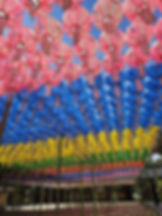

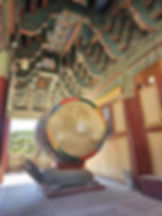

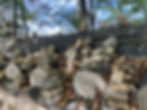
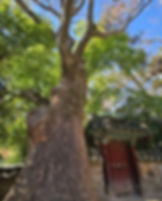
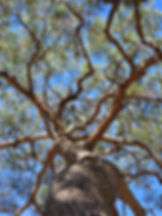
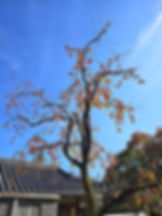
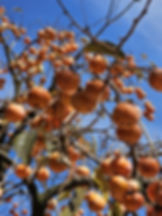
Exiting Bulguksa Temple via its Back Gate


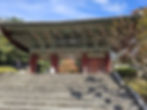

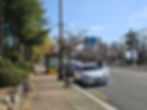
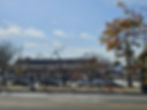
To exit the temple, you can take path to the back gate (i.e. Burimun Gate) for a different view of the temple ground. The path leads to the large public carpark and Tourist Information Center as well. From there, you can take the bus/taxi to your next destination.
💡There are public toilets at the carpark. Across the road from the carpark are cafes and restaurants.
2
Seokguram Grotto 석굴암
9:00 - 18:30 (last admission 17:30)
Free (effective from 4 May 2023, in accordance with the revised Cultural Heritage Protection Act)
-
From the bus stop alight for Bulguksa Temple, walk about 30m in the direction where the bus came from for the bus stop for Bus# 12. Take Bus#12 and alight at Seokguram Parking Lot 석굴암주차장 stop. 14 mins ride. 12 mins walk to Seokguram Grotto.
💡Bus Departs from Bulguksa Temple Stop:
Summer (1 Mar - 5 Oct) 8:40, 9:40, 10:40, 11:40, 12:50, 13:40, 14:40, 15:40, 16:40, 17:20
Winter (6 Oct - 28 Feb) 8:40, 9:40, 10:40, 11:40, 12:50, 13:40, 14:40, 15:40, 16:40 (6-31 Oct & 1-28 Feb) / 16:20 (1 Nov-31 Jan).
💡Bus Departs from Seokguram Parking Lot Stop:
Summer (1 Mar - 5 Oct) 9:00, 10:00, 11:00, 12:00, 13:05, 14:00, 15:00, 16:00, 17:00, 18:20
Winter (6 Oct - 28 Feb) 9:00, 10:00, 11:00, 12:00, 13:05, 14:00, 15:00, 16:00, 17:40 (6-31 Oct & 1-28 Feb) / 17:20 (1 Nov-31 Jan)
💡The bus timetable can also be found at both bus stops. Latest timetable.
💡Recommend to sit on the right side of the bus on the way up to Seokguram Grotto for scenic views of the mountain range and mountainside villages.
💡To get back to Gyeongju Downtown Area, take Bus# 12 from Seokguram Grotto stop and alight at Bulguksa Temple 불국사 stop. Cross the road to the same bus stop alight for Bulguksa Temple earlier. Depending on your next stop, take bus:
a) Bus# 10 (27 mins): Stops along the way in the order of Gyeongju National Museum 국립경주박물관, Donggung Palace & Wolji Pond 동궁과월지, Wolseong-dong Community Center 월성동주민센타 (near to Cheomseongdae) and Palwoojeong 팔우정 stops. OR
b) Bus #11 (27 mins): Get off at Wolseong-dong Community Center 월성동주민센타 (near to Cheomeongdae). OR
c) Bus# 711 (32 mins, infrequent): Stops along the way in the order of Gyeongju National Museum 국립경주박물관, Donggung Palace & Wolji Pond 동궁과월지, Wolseong-dong Community Center 월성동주민센 타 (near to Cheomseongdae), Palwoojeong 팔우정 and Back Gate of Cheonmachong Tomb•Hwangnidan-gil Street 천마총후문•황리단길 stops. OR
d) Bus# 710 (35 mins, infrequent): Stops along the way in the order of Donggung Palace & Wolji Pond 동궁과월지, Wolseong-dong Community Center 월성동주민센타 (near to Cheomseongdae), Palwoojeong 팔우정 and Back Gate of Cheonmachong Tomb•Hwangnidan-gil Street 천마총후문•황리단길 stops.
🎀If you are visiting Bulguksa Temple after Seokguram Grotto, instead of Bulgaksa Temple stop, you may like to alight 1 stop earlier at Bulguksa Ticket Office 불국사매표소 stop. Only Bus #12 operates at this bus stop and it is a shorter walking route to Bulguksa Temple. Once you get off the bus, turn right and turn left into the road ahead leading to Bulgaksa Temple.
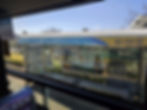
Bus stop at Bulguksa Temple for Bus# 12 to Seokguram Grotto
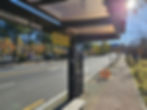
View from bus stop in the direction to Seokguram Grotto

Timetable (Bus# 12) at bus stop of Bulguksa Temple for Seokguram Grotto
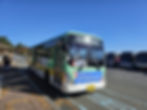
Bus# 12 arriving at Seokguram Parking Lot bus stop
Seokguram Grotto was constructed by the then Prime Minister Kim Dae-Seong during the reign of King Gyeong-Deok (742-765) of the Silla Kingdom. It was designated as National Treasure No. 24 on 20 December 1962 and on 6 December 1995, it was registered as UNESCO World Heritage.
At the center of the grotto is a 3.5m high statue of Sakyamuni Buddha, surrounded by statues of various bodhisattvas, Buddha’s disciples and guardian kings.
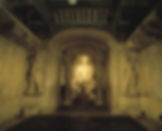


(image source: Cultural Heritage Administration)
When you arrived at the public parking lot/bus stop of Seokguram Grotto, there is a beautiful pavilion with a large bell. You can ring the bell for ₩1,000 which will be donated to the needy.

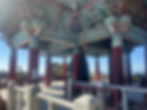


From the entrance, it is about 10 mins walk on the dirt road uphill, followed by a short 2 mins walk on the stone stairway before you reach Seokguram Grotto.
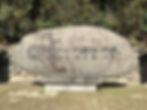

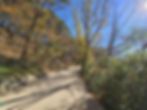
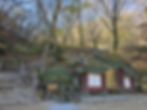
Seokguram Grotto and the statue of Sakyamuni Buddha are viewed inside the small building, protected by a glass wall and visitors to refrain from touching it. You will enter from one side of the building and exit from the other side.
💡Photography is restricted in the grotto.
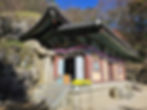

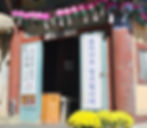
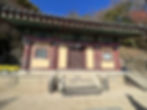
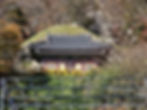

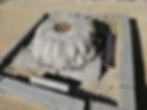
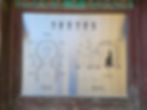
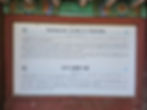
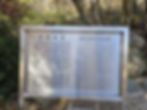
From Seokguram Grotto, you can enjoy breathtaking views of the temple below and mountain range afar.
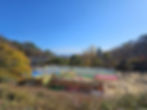

As you come down from Seokguram Grotto, you will come across a temple and souvenir shop next to it.
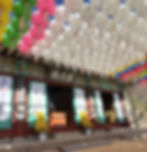
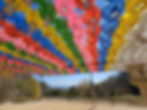
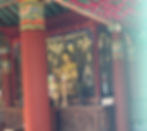
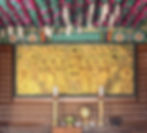


💡At the bus stop for the return bus to your next destination, take a moment to enjoy the scenic lookout while waiting for your bus.
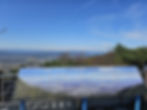
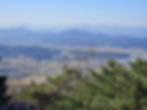
3
Cheomseongdae Observatory 첨성대
9:00 - 22:00 (/21:00 in winter)
Free
-
From Gyeongju Station (formerly Singyeongju Station, KTX/SRT), take Bus# 60 / 61 and get off at Cheomseongdae 첨성대 stop. 28 mins ride. Cross the road to Cheomseongdae. 5 mins walk. OR
-
From Bulguksa Temple, take Bus# 10 (27 mins) / 11 (36 mins) / 711 (32 mins, infrequent) / 710 (35 mins, infrequent) and alight at Wolseong-dong Community Center 월성동주민센타. Cross the road and walk towards Cheomseongdae. 9 mins walk. OR
-
From Donggung Palace & Wolji Pond, 13 mins walk.
Cheomseongdae is the oldest astronomical observatory in Asia built during the reign of Queen Seondeok of the Silla Dynasty. The 9.17m high observatory was designated as National Treasure No. 31 on 20 December 1962.
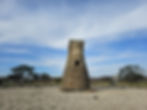


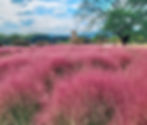
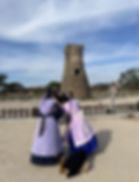

Cheomseongdae Observatory is also known for its beautiful seasonal flower fields nearby (e.g. pink muhly, sunflowers, poppies) and a popular hot spot for taking photographs in hanbok (i.e. Korean traditional clothing).
💡If you wish to get around various attractions at Gyeongju Downtown Area effortlessly, you may consider hopping on the cute-looking Jewel Beetle Electric Car at Cheomseongdae Observatory.
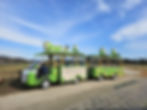
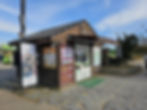

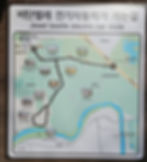
4
Daereungwon Royal Tombs 대릉원
9:00 - 22:00 (last admission 21:30)
Adult (age 19-64): ₩3,000, Youth (age 13-18): ₩2,000, Child (age 7-12): 1,000 won. Free for Adult above 64 and Child under 7.
-
From Gyeongju Station (formerly Singyeongju Station, KTX/SRT), take Bus# 60 / 61 / 700 (infrequent) / 711 (infrequent) and get off at Back Gate of Cheonmachong Tomb•Hwangnidan-gil Street 천마총후문•황리단길 stop. 18 mins ride. After alighting the bus, turn right and the gate entry is on your left just ahead.
Daereungwon is the largest of the ancient tomb sites in Gyeongju.
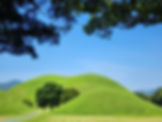
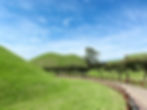
It has 30 ancient tombs including:
-
Hwangnamdaechong Tomb has two tombs connected like the back of a camel. It is the largest ancient tomb (80mx120m area) in Gyeongju. About 59,000 relics were excavated from the site.
-
Tomb of King Michu, 13th King of Silla.
-
Cheonmachong Tomb, the only tomb that is open to the public. The biggest and most luxurious gold crown, Cheonmachong Gold Crown was excavated from the tomb.



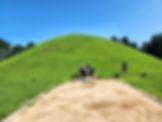

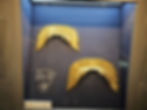
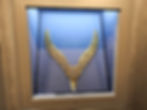
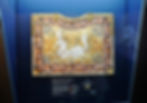
You can also enjoy different serene scenes of Daereungwon Royal Tombs across different seasons (e.g. magnolias in spring and autumn foliage) and the evergreen Pine Forest.

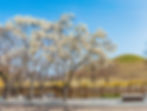

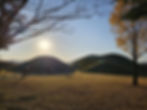

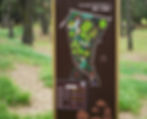
5
Hwangnidan-gil Cafe & Shopping Street 황리단길
Most shops open around 10:00/11:00 to 22:00
-
-
From Gyeongju Station (formerly Singyeongju Station, KTX/SRT), take Bus# 60 / 61 / 700 (infrequent) / 711 (infrequent) and get off at Back Gate of Cheonmachong Tomb•Hwangnidan-gil Street 천마총후문•황리단길 stop. 18 mins ride. After alighting the bus, turn right and walk along the road. Turn left at the cross street ahead (i.e. Poseok-ro). 2 mins walk.
-
Hwangnidan-gil is a popular area located along Poseok-ro Road with trendy cafes, shops, restaurants, photo studios and hanbok rental stores in hanok-style buildings.
💡The name 'Hwangnidan-gil' is a combination of its location in Hwangnam-dong (Gyeongju) and Gyeongnidan-gil, a trendy street in Itaewon (Seoul). It has the meaning of 'Gyeongnidan-gil in Hwangnam-dong', Gyeongju.

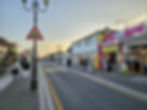
The freshly-baked 10 Won Bread is the most famous snack along Poseok-ro Road with many shops selling it. Made with mozzarella cheese filling, the 10 Won Bread has the image of Dabotap Pagoda of Bulguksa Temple on one side and the Korean ₩10 brass coin on the other side.
Famous 10 Won Bread @Hwangnidan-gil
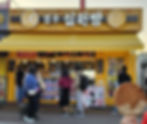

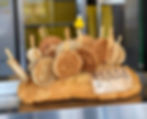
Hanbok Rental, Fashion, Snack, Toy & Self-Photo Studio Shops @Hwangnidan-gil


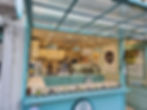



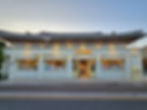

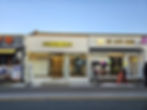
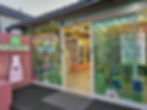
Cafes & Restaurants @Hwangnidan-gil
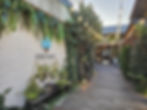
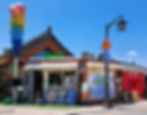
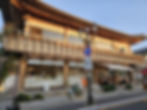
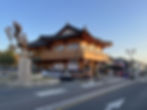
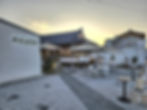
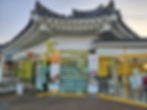
6
Gyochon Hanok Village & Woljeonggyo Bridge 교촌마을 & 월정교
Gyochon Hanok Village: -
Woljeonggyo Bridge: 9:00 - 22:00
Gyochon Hanok Village: free
Woljeonggyo Bridge: free
-
walk from nearby attractions
Located along the beautiful Namcheon Stream at the edge of Gyeongju Downdown Area is Gyochon Hanok Village and the magnificent Woljeonggyo Bridge built across the stream.

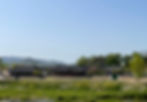
The village is the location of Gukhak, the first national university of Silla established in the 2nd year of King Sinmun of Silla (682).
Gyochon Hanok Village
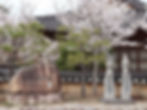
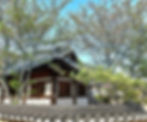

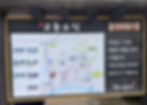
You can view the House of the Gyeongju Choi Clan, richest family in the village.

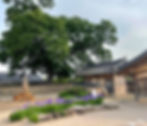
There are also several popular cafes and restaurants in Gyochon Hanok Village:
1. Jinsuseongchan Restaurant 진수성찬 - Korean restaurant.
2. Gyochon 300 Years Restaurant 교촌삼백년집 경주본점 - Korean restaurant.
3. Gyochon Garam - Injeolmi Ice Cream Cafe 교촌가람 - Rice cake ice cream and snacks.
4. Cafe EYST 1779 - A chic, bright-red bricks cafe along the stream near to Woljeonggyo Bridge.
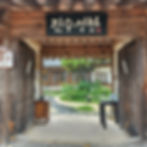

1. Jinsuseongchan Restaurant 진수성찬
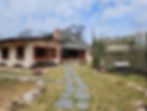
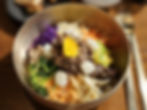
2. Gyochon 300 Years Restaurant 교촌삼백년집 경주본점
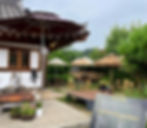
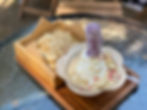
3. Gyochon Garam - Injeolmi Ice Cream Cafe 교촌가람
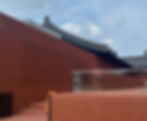
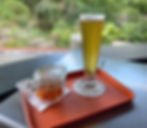
4. Cafe EYST 1779 이스트 1779
Woljeonggyo Bridge
Located near Gyochon Hanok Village is Woljeonggyo Bridge. The bridge was built in 760 A.D during the 19th year of King Gyeongdeok of Unified Silla.
However, it was burnt down during the Joseon dynasty and through historical research, was rebuilt in April 2018. Woljeonggyo Bridge has become the largest wooden bridge in Korea (66m length, 9m width, 8m height).

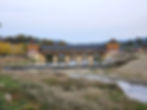
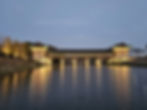
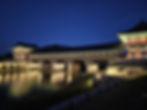
With its brilliant architecture, Woljeonggyo Bridge presents a majestic grandeur on nightfall when it lights up. The views from the bridge and along the Namcheon Stream are equally mesmerising.


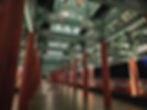
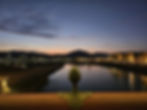

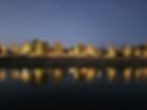
7
Donggung Palace & Wolji Pond 동궁과 월지
9:00 - 22:00 (last admission 21:30)
Adult (age 19-64): ₩3,000, Youth (age 13-18): ₩2,000, Child (age 7-12): 1,000 won. Free for Adult above 64 and Child under 7.
-
From Gyeongju Station (formerly Singyeongju Station, KTX/SRT), take Bus# 700 (infrequent) / 711 (infrequent) and get off at Donggung Palace & Wolji Pond 동궁과 월지 stop. 30 mins ride. The entrance is directly across the road. OR
-
From Gyeongju Station (formerly Singyeongju Station, KTX/SRT), take Bus# 60 / 61 and get off at Wolseong-dong Community Center 월성동주민센타 stop. 27 mins ride. The entrance is across the road towards the right. 12 mins walk. OR
-
From Bulguksa Temple bus stop, take Bus# 10 (25 mins) / 711 (30 mins, infrequent) / 710 (33 mins, infrequent) & get off at Donggung Palace & Wolji Pond 동궁과 월지 stop. Entrance is next to the bus stop.
💡Bus Departs from Donggung Palace & Wolji Pond Stop to Gyeongju Station (formerly Singyeongju Station, KTX/SRT):
-
Direct bus (infrequent) - Bus# 710 / 711, 26 mins.
-
Take bus# 10, 153, 600, 601, 602, 603, 604, 605, 607or 609 (10 mins) & alight at Gyeongju Express • Intercity Bus Terminal 고속버스•시외버스터미널 stop. From the same bus stop, take bus# 50, 51, 70, 710 or 711 (15 mins) to Gyeongju Station (formerly Singyeongju Station).
💡Time to bus arrival is displayed on the LED screen at the bus stop.
Donggung Palace and Wolji Pond (formerly known as Anapji Pond) was a secondary palace used by the crown prince of the Silla Kingdom. It was also a place where grand banquets were held to welcome important guests.
There are as many as 30,000 artifacts excavated from Donggung Palace and Wolji Pond, most of which are daily necessities used by the royal family and nobles in daily life.

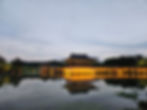
8
Gyeongju National Museum 국립경주박물관
10:00 - 18:00 / 19:00 (Saturdays & public holidays). Last admission 30 mins before closing.
Closed on 1 January, Seollal (Lunar New Year's Day) and Chuseok (Korean Thanksgiving Day).
free
-
From Gyeongju Station (formerly Singyeongju Station, KTX/SRT), take Bus# 711 (infrequent) and get off at Gyeongju National Museum 국립경주박물관 stop. 31 mins ride. The museum is next to the bus stop. OR
-
From Gyeongju Station (formerly Singyeongju Station, KTX/SRT), take Bus# 700 (infrequent) and get off at Donggung Palace & Wolji Pond 동궁과 월지 stop. 30 mins ride. Walk on the right of road to the museum. 4 mins walk. OR
-
From Bulguksa Temple bus stop, take Bus# 10 (24 mins) / 711 (30 mins, infrequent) & get off at Gyeongju National Museum 국립경주박물관 stop. Museum is directly across the road.
Gyeongju National Museum is Korea's representative museum where numerous historical and cultural artifacts of the Silla Dynasty is housed.
There are 4 main exhibition halls:
1. Silla History Exhibition Hall - Silla Gold Crown (National Treasure No. 188)
2. Silla Art Exhibition Hall
3. Wolji Exhibition Hall - Artifacts excavated from Donggung Palace and Wolji Pond are exhibited here.
4.Outdoor Exhibition Area - Features a collection of stone pagodas, Buddhist sculptures and lanterns collected at ancient temple and palace sites across Gyeongju. Highlights include the Divine Bell of King Seongdeok (National Treasure No. 29) and the Three-story Stone Pagoda from the Goseonsa Temple site (National Treasure No. 38).


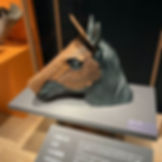


Gyeongju Daereungwon Stone Wall Road Festival & Cherry Blossom Hot Spots
Gyeongju Daereungwon Stone Wall Road Festival
Gyeongju is famous for its cherry blossoms where the Gyeongju Daereungwon Stone Wall Road Festival is held annually in spring. Besides the popular King Cherry Blossoms at Bulguksa Temple, you can also find clusters of cherry blossoms at Gyeongju Downtown Area.
Daereungwon Stone Wall Road Festival (formerly Gyeongju Cherry Blossom Festival) is the representative spring festival held every April in Gyeongju. Cherry blossoms lined both sides of the road, forming the famous cherry blossom tunnel.
During the festival, there will be street art performances, food stalls, flea markets, road playgrounds, experience programs and night light shows.
💡Daereungwon Stone Wall Road (/Daereungwon Doldam-gil) is located right next to Daereungwon Royal Tombs along Gyerim-ro road. It stretches about 560m long from Taejong-ro cross road to Cheomseong-ro cross road. The road is closed to traffic during the festival period.



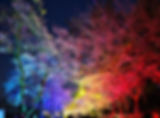

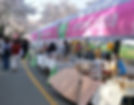
If your travel dates do not coincide with the festival dates, you can still visit Daereungwon Stone Wall Road. You might be in luck to catch the cherry blossoms in full blooms due to possible weather changes; and without the festival crowd.
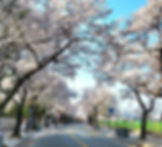
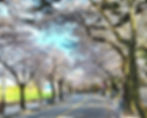
Daereungwon Royal Tombs (near Tomb of King Michu)
Another popular cherry blossom hot spot is located near Tomb of King Michu inside Daereungwon Royal Tombs. You can take unique pictures of the beautiful cherry blossoms with the historic stone wall and tomb hills as the backdrop.
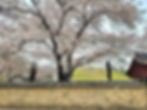



Cheomseong-ro (from Starbucks to end of the road)
At Gyeongju Downtown Area, you can also find cherry blossoms along Cheomseong-ro, stretching about 900m long from Starbucks Gyeongju Daereungwon to end of the road near Cheomseongdae Observatory.

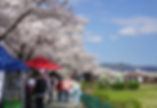
Woljeonggyo Bridge & Gyochon Hanok Village
At Woljeonggyo Bridge, you can enjoy beautiful cherry blossoms with less crowd and take memorable photos of cherry blossoms with the historic bridge landmark in the background.
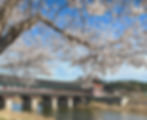

Also, at the nearby Gyochon Hanok Village, you may catch the cherry blossoms and other types of flowers in bloom in the village.
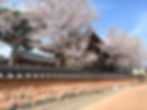
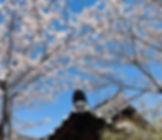
Bulguksa Temple


For the famous, big and pink King Cherry Blossoms, head to Bulguksa Temple in Spring. The King Cherry Blossoms viewing spot is located near to Bulguksa Temple's Tourist Information Counter and public parking lot.
💡Compare to most other cherry blossoms in Korea, King Cherry Blossoms have more petals (/denser), larger in size and the colour is more vibrant.

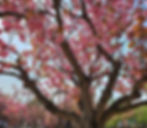
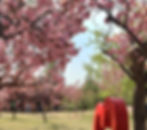
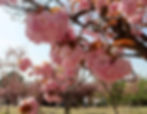

Popular Cafes & Restaurants @Gyeongju Downtown Area
There are many unique and popular hanok cafes and restaurants located along Poseok-ro (Hwangnidan-gil) all the way to Starbucks Gyeongju Daereungwon. Bigger and more spacious cafes with vast landscape views can be found along Cheomseong-ro and towards Woljeonggyo Bridge/Namcheon Stream.
💡There are simply too many fabulous and interesting cafes/restaurants to recommend in Gyeongju Downtown Area. So, please do explore and discover your personal favourites or secret hunts too.
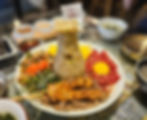
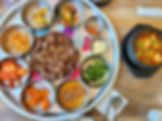
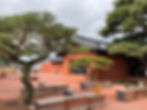
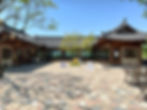
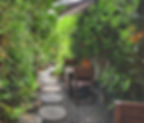
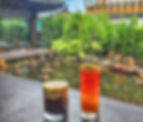


The beautiful scenery of Gyeongju Downtown Area and the artistically-designed hanok-style cafes make them strikingly unique and precious at the same time being located on UNESCO World Heritage Site. It is certainly worthy to spend some time in a comfortable cafe on your trip to Gyeongju.
Here are the recommended cafes in Gyeongju Downtown Area. Listing in no particular order.
Starbucks Gyeongju Daereungwon 스타벅스 경주대릉원점
☗
경북 경주시 첨성로 125 | 125 Cheomseong-ro, Gyeongju-si, Gyeongsangbuk-do
☼
8:00 - 22:00 (Mon-Thu) / 23:00 (Fri-Sun)
Starbucks Gyeongju Daereungwon has a hanok-style exterior with a unique sit-down indoor seating section. The walls are decorated with artworks and representative patterns of Silla.
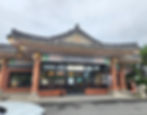

Cafe Zorba 조르바
☗
경북 경주시 태종로 735 | 735 Taejong-ro, Gyeongju-si, Gyeongsangbuk-do
☼
11:00 - 19:00 (last order 18:30)
Cafe Zorba is a spacious coffee shop, bakery and pub, located 1 min walk along Taejong-ro main road from the entrance of Hwangnidan-gil (i.e. Poseok-ro). The cafe provides a convenient place to chill out before catching your next bus/train to the next destination.
You can enjoy vantage view of the nearby park with tomb hills (Bonghwangdae) from the cafe's 2nd floor, fitted with full glass window or quiet moments on its open rooftop (with basic settings).
💡For those travelling with children, kindly note there is a sign of "No Kids" at its entrance.


Cheongsudang Gyeongju 청수당 경주 青水堂
☗
경북 경주시 첨성로81번길 21-1 | 21-1, Cheomseong-ro 81beon-gil, Gyeongju-si, Gyeongsangbuk-do
☼
10:30 - 21:30 (Mon-Fri), 10:00 - 21:30 (Sat-Sun). Last order: 30 mins before closing
Cheongsudang Gyeongju is a lovely hanok cafe with nice atmosphere. Its entrance is located facing the public parking lot, about 6-7 mins walk from the entrance of Hwangnidan-gil (i.e. Poseok-ro cross road Taejong-ro) and Daereungwon's main entrance.
The indoor seating area overlooks a beautiful pond with boat and lanterns that light up beautifully on nightfall. The outdoor area is a cosy lane surrounded by bamboo and greenery.
The menu (available in English & pictures) includes set menu, coffee (stone drip coffee), matcha, black tea, hand drip tea, fruit tea (tangerine, pricky pear cactus), souffle castella (original, mugwort) and fromage cakes (black sesame, matcha, chestnut).
Signature menu includes egg coffee, sweet pumpkin sikhye, matcha latte, matcha cream latte, strawberry souffle castella, strawberry fromage cake and cherry fromage cake.
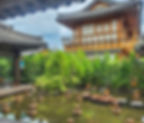
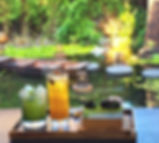
Cafe EYST 1779 이스트 1779
☗
경북 경주시 교촌안길 21 | 21, Kyochon-an-gil, Gyeongju-si, Gyeongsangbuk-do
☼
11:00 - 21:00 (Last order 20:30)
Cafe EYST 1779 is a large aesthetically-designed and beautiful red-brick cafe with spacious indoor and outdoor areas. It is located next to Namcheon Stream, close to Woljeonggyo Bridge and Gyochon Hanok Village in Gyeongju.
Popular menu items include Signature Butter Cream Latte and Salt Monaka Ice Cream. Other interesting items include Peach Makgeolli and Makgeolli Soft Milk Ice Cream. You can also order coffee (e.g. Cinnamon Cream Latte, Vanilla Latte), tea (e.g. Honey Ginseng Tea, Cherry Milk Tea), shakes, beer and dessert (e.g. Black Salt Bread, Yakgwa Butter Bar, Makgeolli Rice Cake) at the cafe.
💡Cafe EYST 1779 is founded by the richest family of Gyochon Hanok Village, House of Choi.
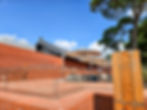
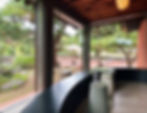
Do Not Disturb Bakers 두낫디스터브 경주본점
☗
경북 경주시 첨성로 71-1 | 71-1 Cheomseong-ro, Gyeongju-si, Gyeongsangbuk-do
☼
8:30 - 21:00 (last order 20:30)
Do Not Disturb Bakers is located along Cheomseong-ro (near Poseok-ro cross road). It is a great break stop between attractions in Gyeongju. The 2-storey cafe provides comfortable seats with relaxed, scenic open field view of Hwangnam-dong Ancient Tombs on its 2nd floor.
The menu includes freshly-made bread (e.g. salted butter roll, castella cream salted butter roll, melon salted butter roll, layered pastry bread), coffee, non-coffee drinks (e.g. latte, juice, ade), tea, ice-cream, soup and yoghurt.


Bagel Bageler 베이글 베이글러
☗
경북 경주시 교촌길 18 | 18 Gyochon-gil, Gyeongju-si, Gyeongsangbuk-do
☼
11:00 - 21:00 (Mon-Thu), 11:00 - 21:00 (Fri-Sun)
Bagel Bageler is a beautiful hanok cafe with vast flower field (seasonal), tomb hill and mountain views. The serenity around the cafe makes it an ideal place to get away from the crowd at downtown Gyeongju or for brunch. The cafe is located on the way from Hwangnidan-gil (Poseok-ro) to Woljeonggyo Bridge.
You can find different types of delicious-looking bagels (e.g. sandwich, salt olive jambon beurre, ang-butter, egg-mayo, chocolate, garlic, pepperoni, lotus, blueberry, cherry pistachio, pretzel) and cream cheese. The drink menu include coffee, tea, juice and ade.
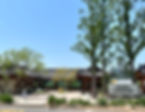

a) Popular Cafes
A trip to Gyeongju will not be complete without trying its famous local cuisine (cold noodles, bulgogi, braised short ribs, clams, beef tartare, etc).
Here are the recommended popular restaurants in Gyeongju Downtown Area. Listing in no particular order.
b) Popular Restaurants
Gyodong Myeonok Gyeongju Daereungwon 교동면옥 경주대릉원점
☗
경북 경주시 첨성로 119 | 119, Cheomseong-ro, Gyeongju-si, Gyeongsangbuk-do
☼
9:00 - 20:30
🌐
Located next to Starbucks Gyeongju Daereungwon, Gyodong Myeonok Gyeongju Daereungwon serves a good variety of cold noodles, including bulgogi, braised ribs, pancakes and dumplings.
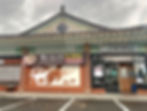
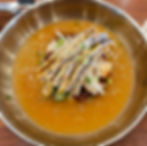
Baeknyeonsonnim 백년손님
☗
경북 경주시 포석로1050번길 32 | 32, Poseok-ro 1050beon-gil, Gyeongju-si, Gyeongsangbuk-do
☼
9:00 - 20:00. Breaktime 15:00 - 16:10 (Mon-Fri)/15:00-16:40 (Sat-Sun). Last Order 14:30, 19:30
Opened since 1993, Baeknyeonsonnim (/100 Years Gyeongju) offers a simple menu of grilled pork bulgogi, grilled beef bulgogi and grilled fish, served with 7 side dishes, lettuce wraps and soybean paste stew. The restaurant is located 2 mins walk from Starbucks Gyeongju Daereungwon.
💡As the meat is grilled over charcoal, a minimum order for 2 persons is required.
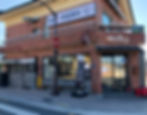
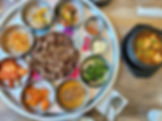
Yeomion 여미온
☗
경북 경주시 첨성로81번길 22-12 1층 | 1st floor, 22-12, Cheomseong-ro 81beon-gil, Gyeongju-si, Gyeongsangbuk-do
☼
11:00 - 21:00. Breaktime 15:30 - 17:00. Last order 20:30
Yeomion is a Korean Cuisine Restaurant set in a beautiful hanok with garden. Its menu includes bibimbap, noodles, pancakes and raw meat. 4 mins walk from Starbucks Gyeongju Daereungwon.
💡You can join the remote waitlist on Catch Table App.
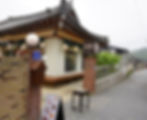
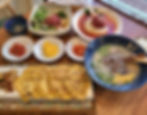
Hwangnam Dukkeobi 황남두꺼비식당 황남본점
☗
경북 경주시 포석로1050번길 16 | 16, Poseok-ro 1050beongil, Gyeongju-si, Gyeongsangbuk-do
☼
11:00 - 21:00 (Breaktime 15:00 - 17:00, Last order 20:30)
Hwangnam Dukkeobi is another famous restaurant in Hwangridan-gil, Gyeongju. The menu includes pictures of set meals and popular dishes (marked with stars). Its Instaworthy 'Cheomseongdae Set' and signature braised short ribs are the must order for many diners. Other dishes include clam bibimbap, beef tartare, pancake, stew, Korean steamed eggs, etc.
💡There is a on-site queueing kiosk (English available) but priority will be given to reservations made via Naver.
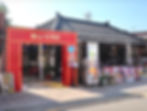
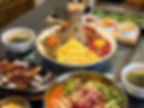
Poseok-ro by Gyeongju 포석로 소갈비찜
☗
경북 경주시 포석로1068번길 22 | 22, Poseok-ro 1068beon-gil, Gyeongju-si, Gyeongsangbuk-do
☼
10:30 - 22:00 (Last order 21:00)
Poseok-ro by Gyeongju is famous for its braised beef short ribs and was aired on local KBS TV program. You can order from the tablet at the table which includes pictures, popular set meals, seafood pancakes, beef ribs stew, rice balls with fillings, buckwheat noodles, alcoholic/non-alcoholic drinks, etc.


Hyanghwajung 향화정
☗
경북 경주시 사정로57번길 17 | 17, Sajeong-ro 57beon-gil, Gyeongju-si, Gyeongsangbuk-do
☼
11:00 - 21:30 (Breaktime 15:00 - 17:00, Lunch last order : 15:00, Dinner last order 20:30)
Hyanghwajung, the hanok-style Korean restaurant has been selected for the Blue Ribbon Survey for 4 consecutive years from 2021 to 2024. It has a limited-item menu of 2 pages with pretty drawings of mains (clam bibimbap for 2, beef tartare bibimbap, beef tartare & cold raw fish soup with noodles and rice on the side), sides (beef tartare, Korean beef bulgogi & seafood pancake) and drinks (alcholic/non-alcholic).
💡The restaurant uses Catch Table on-site queueing kiosk at entrance (English available). Remote queueing via Catch Table app is currently not available. Expect a queue when visiting the restaurant.
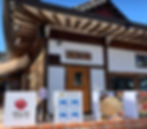
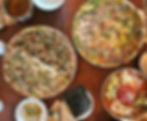

Recommended Accommodations @Gyeongju Downtown Area
Hotels ✦ Hanoks
Touring Gyeongju Downtown Area (e.g. Cheomseongdae, Daereungwon, Donggung Palace & Wolji Pond) requires a fair amount of walking between attractions. Also, besides the limited transport to Bulguksa Temple and Seokguram Grotto that are both located further away, they cover large ground areas too.
As such, it is highly recommended to at least stay overnight in Gyeongju to fully enjoy its cultural heritages, night lightings, tour its national museum, relax in scenic cafes and try out its local snacks and cuisine without rushing from one attraction to another... and tiring out yourself to get to another city before end of the day.
In fact, there are a good selection of quality hotels and hanoks (Korean Traditional Houses) at Gyeongju Downtown Area. You can find mostly hotels on one side of Taejong-ro main road and the other side is populated by traditional hanoks.
There are many highly-rated hotels (but no international hotel chains or 4/5-star) clustered along the main road (Taejong-ro) near Gyeongju Express Bus Terminal, Gyeongju Intercity Bus Terminal and Gyeongju Express•Intercity Bus Terminal bus stop (from Gyeongju KTX Station).
Here are the recommended hotels near the bus terminals with listing order based on distance from the main road (Taejong-ro).
Gyeongju GG Tourist Hotel
★★★ | 8.3 Review Rating
Gyeongju GG Tourist Hotel is conveniently located within 2 mins walk across the main road (Taejong-ro) from Gyeongju Express•Intercity Bus Terminal bus stop if you are coming from Gyeongju KTX Station by bus. This is also the bus stop for direct bus to Bulguksa Temple (& onward transfer to Seokguram Grotto). Likewise, Gyeongju Express Bus Terminal and Gyeongju Intercity Bus Terminal are within 2 mins walk for those arriving from Busan by bus. It is a short 5 mins walk from hotel to Hwangnidan-gil Shopping Street and 10 mins walk to Daereungwon Royal Tomb. McDonald's, convenience stores, cafes and restaurants are around the hotel too. The hotel offers large-sized rooms from 30m², gym, free private parking and 24-hour reception with luggage storage facility.




Denbasta Hotel Heritage
★★★ | 8.7 Review Rating
Denbasta Hotel Heritage is also conveniently located next to Gyeongju GG Tourist Hotel. It offers various room types (e.g Family Suite for up to 6 persons, Suite with Terrace & Outdoor Bath) that come with private bathrooms, air-conditioning and soundproofing. Each room includes TV, minibar and free WiFi throughout the property. Free on-site private parking is available.




Y Collection by Unboundi Gyeongju
★★★ | 8.2 Review Rating
Y Collection by Unboundi Gyeongju is well-liked for its minimalist design, near to bus terminals/bus stops, attractions, restaurants, convenience stores and 2 mins walk to main road (Taejong-ro).
🍞Room rates inclusive of American buffet breakfast with juice (simple).
💡There is no lift in the low rise hotel.




Maison Mini Hotel
★★★ | 9.0 Review Rating
Maison Mini Hotel is located 3 mins walk to the main road (Taejong-ro). It offers affordable rooms with air-conditioning, private bathrooms and family rooms that can accommodate up to 4 persons. Guests can enjoy the lounge, shared kitchen, concierge service, luggage storage and free WiFi throughout the property.
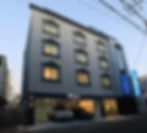


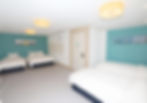
Gyeongju Hotel Gonggan
★★★ | 8.6 Review Rating
Gyeongju Hotel Gonggan is a popular newly-renovated hotel located near Gyeongju Express Bus Terminal/Gyeongju Intercity Bus Terminal or 5 mins walk to the main road (Taejong-ro). All rooms include air-conditioning, private bathroom, work desk, TV, parquet floors and free WiFi.
🍞Affordable room rates inclusive of highly-rated buffet breakfast.




Gyeongju BonghwangMansion
★★★ | 9.2 Review Rating
Gyeongju BonghwangMansion is one of the most popular properties located on the other side, near the back gate of Daereungwon and 3 mins walk to the main road (Taejong-ro). It is within walking distance to most attractions with many cafes, restaurants and convenience stores around the property. The rooms are fairly large with air-conditioning, private bathroom and TV.
🍞Room rates include breakfast (simple) where you can enjoy city-view from the dining area.

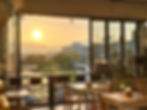

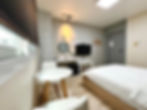
a) Hotel Accommodations
b) Hanok Accommodations
There are also a good variety of hanoks in Gyeongju Downtown Area where you can experience staying in Korean Traditional Houses. The hanok accommodations vary from private hanok villas, hanoks with different room types to hanok villages.
Here are the recommended hanoks overview near Hwangnidan-gil Shopping Street with listing order based on distance from the main road (Taejong-ro).
Hanok Dasi Bom 102
9.7 Review Rating
Hanok Dasi Bom 102 is conveniently located 1 min walk to the main road (Taejong-ro) between Gyeongju Express Bus Terminal (5 mins walk) and Hwangnidan-gil Shopping Street (5 mins walk). It offers a cosy private holiday home with one bedroom, bathroom, air-conditioning, streaming services, fully equipped kitchen with coffee machine, washing machine, free WiFi and free private parking.

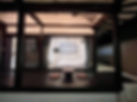
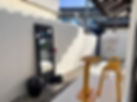

Gyeongju Hanokstay Darak
9.3 Review Rating
Gyeongju Hanokstay Darak is located 3 mins walk to Taejong-ro main road and Hwangnidan-gil Shopping Street. The property offers various tastefully designed room types that can accommodate up to 6 persons. Rooms are with air-conditioning, TV, refrigerator, microwave, electric kettle and hairdryer. Free on-site private parking available.

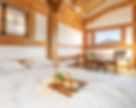


Yeonriji
9.5 Review Rating
Yeonriji offers a spacious private hanok with garden, pool, projector, free parking, air-conditioning, kitchen, washing machine and toiletries. The property can host up to 10 persons, perfect for those travelling with families or friends. Yeonriji is located 5 mins walk to Hwangnidan-gil Shopping Street and 9 mins walk to Taejong-ro main road.
💡As the property is popular, book as soon as your travel plan is firmed up.
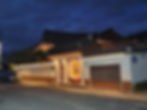


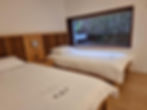
Hwangnamguan Hanok Village
8.2 Review Rating
Hwangnamguan Hanok Village is centrally located along Hwangnidan-gil Shopping Street at the cross junction of Poseok-ro and Geumseong-ro 182beon-gil, about 10 mins walk from the main road (Taejong-ro) and near to several attractions. The beautiful serene hanok village offers affordable hanok experience of various room types (futons/beds) with air-conditioning and private bathrooms. Guests can enjoy free on-site private parking, luggage storage and free WiFi throughout the property.




Soseoljae Guesthouse Gyeongju
9.4 Review Rating
Soseoljae Guesthouse Gyeongju is located near to Starbucks Gyeongju Daereungwon Branch and 6 mins walk to Cheomseongdae Observatory. Guests can enjoy the beautiful garden, on-site cafe, free WiFi throughout the property and free on-site private parking. You can pick from studio or 1-bedroom house; and all rooms are air-conditioned with private bathrooms.
🍞Room rates inclusive of daily à la carte breakfast (simple).
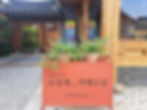



Gyeongju Hanok Sohwa
9.8 Review Rating
Gyeongju Hanok Sohwa is probably the most beautiful and comfortable private hanok villa at downtown Gyeongju. It features 2 bedrooms (sleep up to 6 pax), 2 bathrooms, living room, private pool, terrace, garden, free WiFi, free on-site private parking, air-conditioning, fully equipped kitchen with refrigerator, microwave, oven and stovetop. The hanok is located near Namcheon Stream where you can enjoy a relaxing walk along the stream to Woljeonggyo Bridge.
🍞Breakfast is included in the room rates.
💡Minimum stay of 2 nights required.
💡As the property is popular, book as soon as your travel plan is firmed up.




Map of Bus Route Between Bulguksa Temple & Seokguram Grotto

Map of Bulguksa Temple

Map of Key Attractions, Gyeongju Bus Terminals, Recommended Cafes, Restaurants & Accommodations at Gyeongju Downtown Area
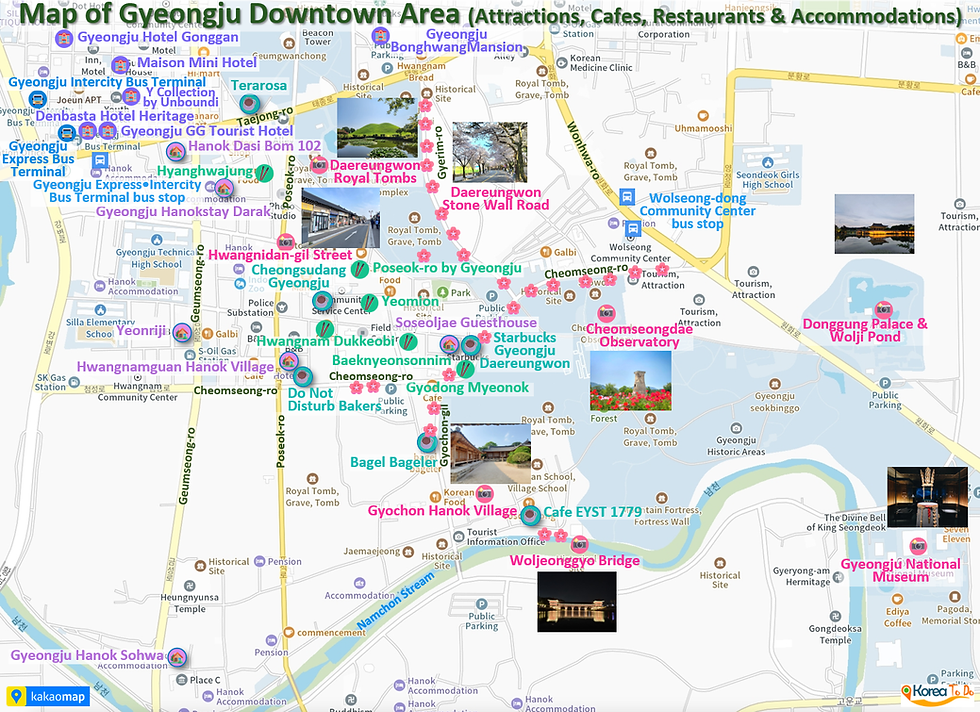
Map of Recommended Walking Courses at Gyeongju Daereungwon Ancient Tomb Complex

Map of Hwangridan-gil Street

Map of Gyochon Hanok Village

KoreaToDo TOP PICKS - Tours (from Busan), Activities & Discount Tickets
➥ Handpicked experiences by KoreaToDo for their uniqueness, value, popularity, price competitiveness and at times, tedious to reach by public transport.
♔ KoreaToDo recommends Klook.com, Asia leading in-destination service provider.

🌸SEASONAL HOT PICKS🌸 Handpicked Experiences in Busan
Other KoreaToDo Collection that you may like:
-
Top hidden attractions in Seoul
-
Top hidden attractions in Busan
-
Popular & Unique Day Trips from Seoul under 3 hours






















